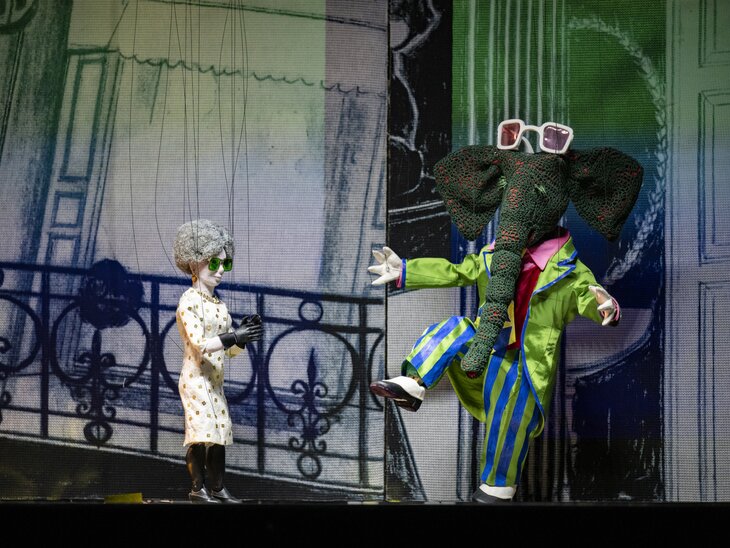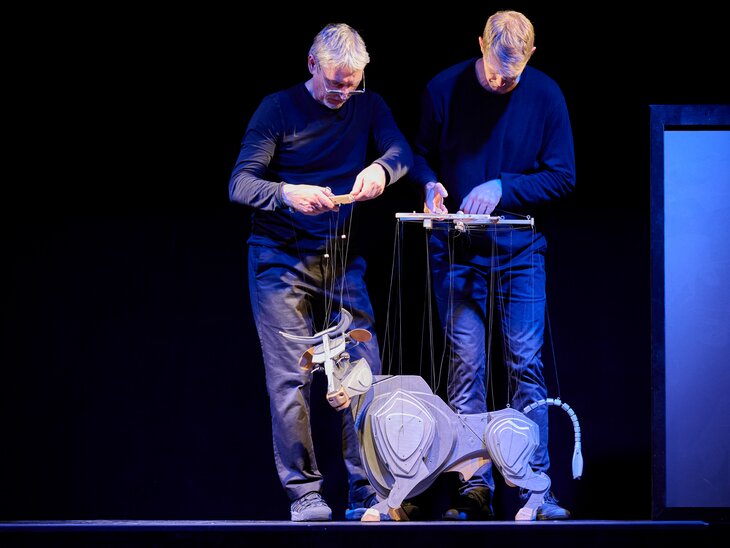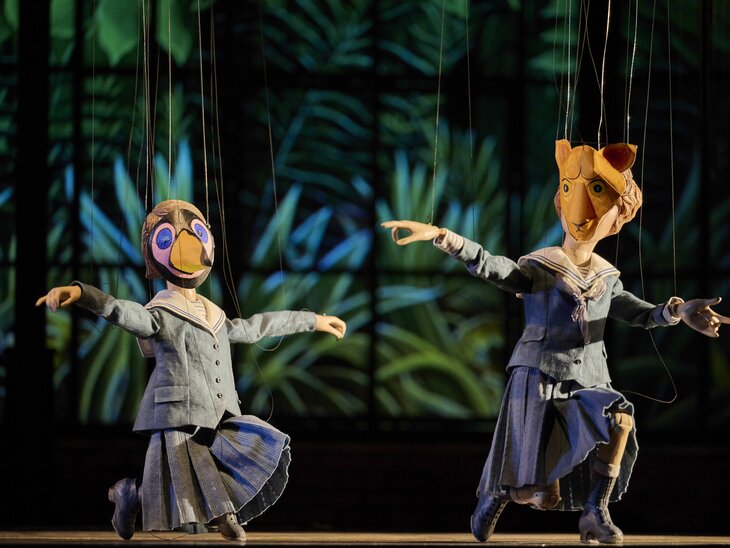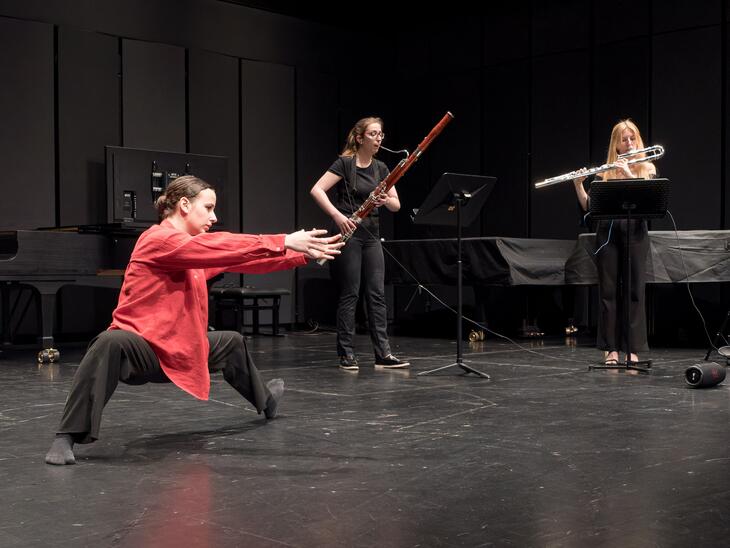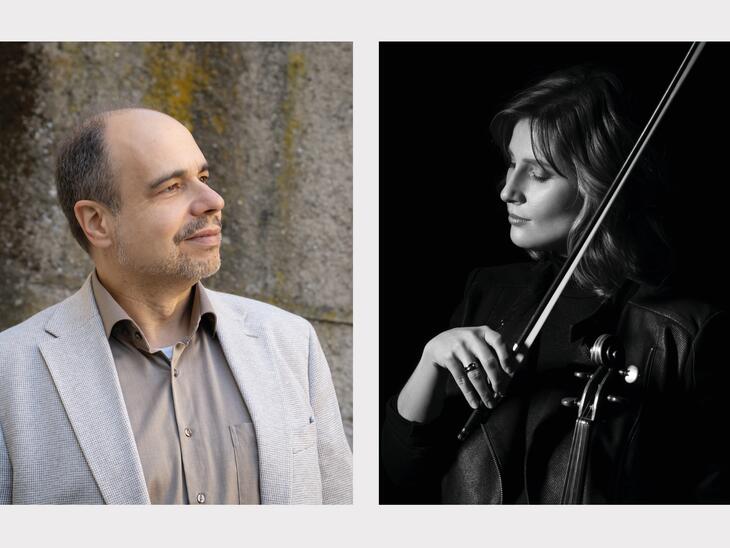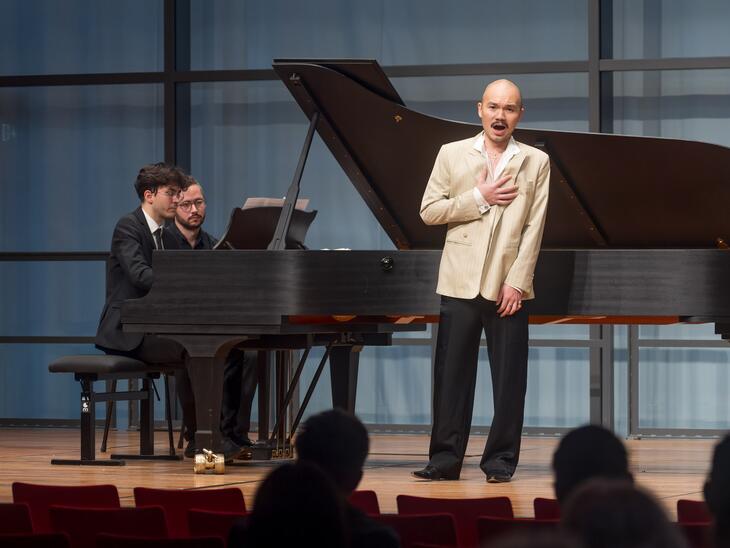The idea for this new production with three classics of literature and music had been in the back of the minds of the puppet theatre team around its artistic director Philippe Brunner for a long time. The famous "zoological fantasy" Carnival of the Animals by the French composer Camille Saint-Saëns in a poetic new interpretation formed its starting point. Expanded by the two pieces: The Story of Babar the Little Elephant by Jean de Brunhoff and Ferdinand the Bull by Munro Leaf. The story of Babar, who flees to a city and finds pleasure in the life of the people, is very well known in France, yet it is rarely brought to the stage - an added incentive. The two literary children's stories are not interwoven and yet both tell of growing up and gaining experience. In Ferdinand the bull, who doesn't like the fights of his peers and prefers to enjoy the scent of flowers, the message is added that being different is okay. The musical realisation is done in cooperation with students of the Mozarteum University under the direction of Andreas Groethuysen and Benjamin Schmid, who also plays the part of the solo violin. "Each piece is a work of art in itself. It was simply nice to combine these three different pieces musically as well, the rehearsals are a lot of fun," as Philippe Brunner reports. And it is not only meant to be fun for children: These are pieces for adults, families and children.
The Carnival of the Animals is not based on a children's story, although Camille Saint-Saëns was considered a humorous French composer who cultivated an unusual and cheerful style of teaching. Play and seriousness were combined and he had his classes rehearse persiflage, among other things. In 1886, on the occasion of a carnival concert, he finally wrote Carnival of the Animals with some jocular musical elements, which was premiered on a small scale on 9 March. However, merely assessing the piece as a parody or caricature - Saint-Saëns not only imitated various animal sounds with instruments in his work, but also parodied his fellow composers - falls short. (Cf. Michael Stegemann, 1986 p. 219ff) "The Carnaval des animaux is not a malicious but an affectionate caricature" (Michael Stegemann, 1986 p. 226). Andreas Groethuysen, who as a professor at the Mozarteum University prepares the studying piano duos for this piece, knows that students love to perform it. "It is a prime example of humour in music," as Groethuysen explains, and yet it is quite demanding to play, not only because in this case it is performed four-handed on one piano. The duos - there are two of them, also to be prepared for failures - need four to six weeks to prepare. In any case, this performance is enriching for the students. They accompany a story and have to react to what happens on stage. It will be exciting to see to what extent the scenic events influence the play. However, it is not only the musicians who are challenged, the puppeteers have also internalised the scores, as Philippe Brunner reports. So the play and the music will influence each other. In addition to the piano duo, students with flute, clarinet, percussion, violoncello and double bass under the direction of Benjamin Schmid (violin) will also be involved in the Carnival of the Animals.
The story of Babar, as part of a series of children's books, was written in 1931 and set to music by Francis Poulenc in a version for narrator and piano between 1940 and 1945. At the Marionette Theatre Salzburg, the original version with piano is used. Because, as Brunner points out, it is precisely this version that has a transparency and brilliance that is difficult to achieve with orchestra. Ferdinand the Bull was published as a children's book in 1936. In 1971 it was set to music for solo violin by Alan Ridout. Until now, puppet theatre pieces have only been accompanied by live music in co-productions with the Mozart Week. The live musical accompaniment by artists from the Mozarteum University is therefore a novelty and offers the chance to expand the repertoire. The musical accompaniment to the stories is not insignificant. Music is created to generate emotions and, especially in this case, images. "Every music has its character and its expression, mostly states of mind or emotions. Music therefore lends itself very well to telling stories. There is no other art that moves so deeply," Groethuysen is convinced.
The production is special in many ways. It consists of three different plays with three different directing teams. The preparation and realisation time is just under two years. The plays are short, and yet a story needs to be told - not an easy undertaking for the director. The puppet theatre team went above and beyond with more than 30 new puppets, most of which, including their costumes, were made in-house, with numerous set elements, including a large glass house with furniture, props, crochet work and even wool they dyed themselves. Large animals such as elephants and a bull are not everyday work even for the experienced puppet makers and puppeteers (the performers combine both professions) of the puppet theatre. The animals have to be easy to move, which in some cases requires several puppeteers. Most of the figures are moved from a height of two metres on strings - whereby the puppeteers assume an extremely challenging posture. The strings make it impossible to change the figures, which means that a separate puppet had to be made for each costume! Moreover, the special skin given to the animal figures in The Story of Babar involved many "crochet evenings", as Susanne Tiefenbacher, Managing Director of the Salzburg Marionette Theatre, recalls with a smile. Anyone who thinks that figures today come from 3-D printers and that much can be done with plastic is mistaken. The core of the figures is made of wood, to which are added foams, textiles and wool. The trades involved in this production are carpentry, tailoring, costume design, locksmithery, sculpture, technology for lighting and sound, among others. The performance team, including live music and the narrator, comprises a total of 23 people. However, all these challenges are rewarded. The production will be included in the standard repertoire of the Salzburg Marionette Theatre and can hopefully inspire young and old for many years to come!
About the production:
- BABAR: Director: Lisa Stumpfögger; Stage design and figurines: Herbert Kapplmüller; figure construction: Max Kiener-Laubenbacher, Vladimir Fediakov; narrator: Hanna Schygulla
- FERDINAND: Director: Philippe Brunner; Figurine and puppet construction: Vladimir Fediakov; Illustrations: Clemens Birsak; Narrator: Matthias Bundschuh
- KARNEVAL DER TIERE: Director and stage design: Matthias Bundschuh; Figurines and puppet construction: Barbara and Günter Weinhold
(First published in the Uni-Nachrichten / Salzburger Nachrichten on 10 June 2023)

